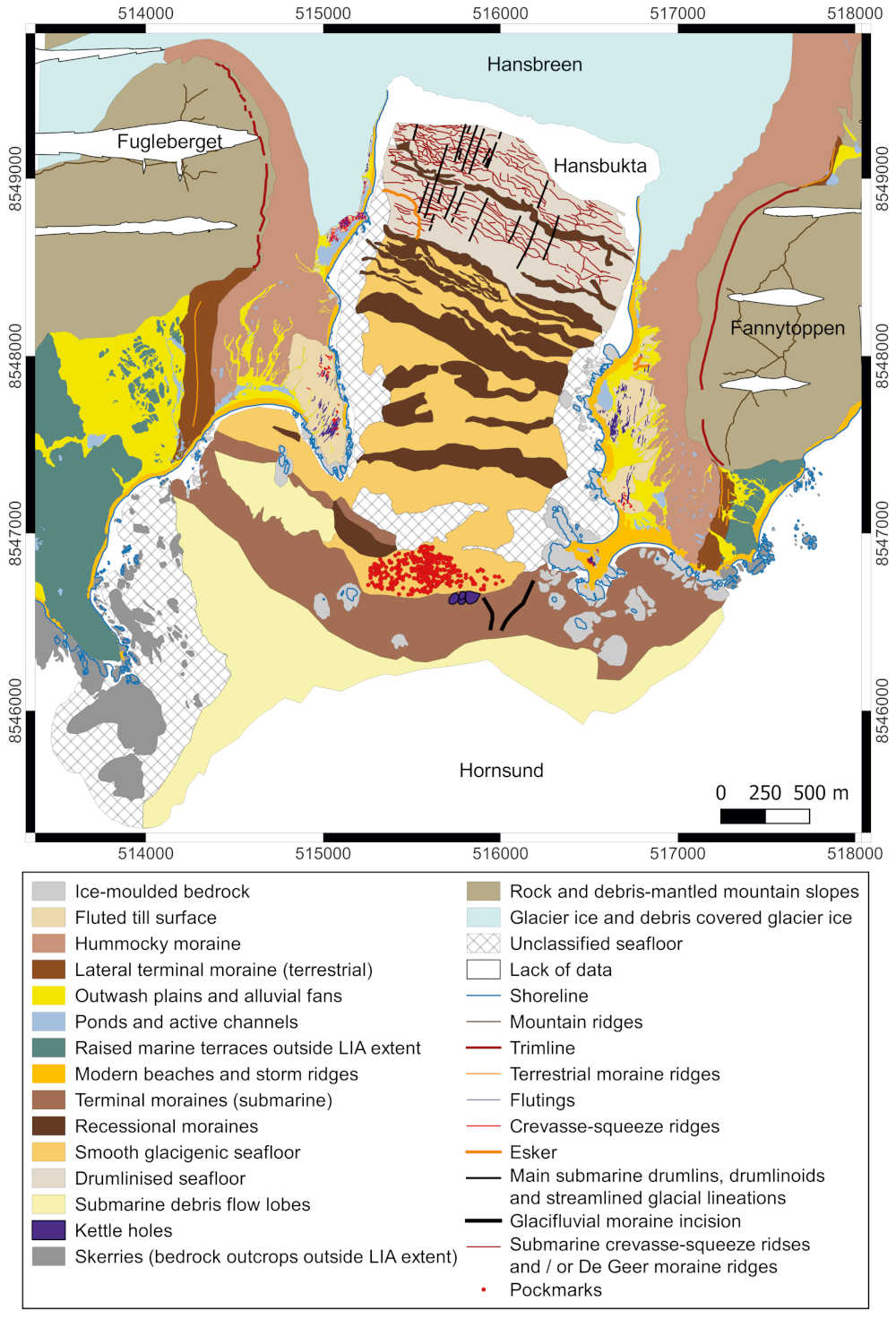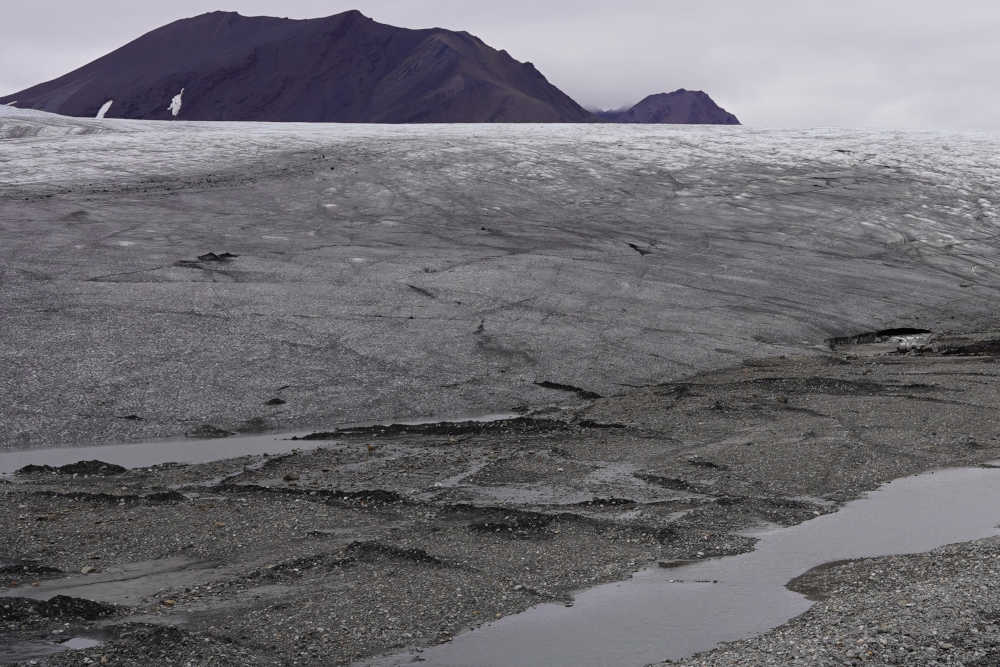Glacier surge is a rapid increase in the glacier velocity by 10 – 1000 times compared to “normal” values. Such an event leads to the displacement of a large volume of ice from the upper to the lower part of the glacier and usually to the advance of the glacier front on a large scale. Surge-type glaciers are widespread in Svalbard.
Hansbreen is one of the most investigated glaciers in this region. However, the glacier has not revealed evidence of a potential surge-type behavior during the multi-decadal observations of glacier dynamics.
In their new paper published in the Annals of Glaciology, Aleksandra Osika MSc and Prof. Jacek Jania presented evidence of a surge of Hansbreen in 1872. The photographs from the Austro-Hungarian and Norwegian expeditions provided convincing records of this surge event and the subsequent quiescent phase in 1918. This surge corresponded to the advance of Hansbreen to its maximal extent from the Little Ice Age.
The key features of surging glaciers are characteristic landforms in the glacier forefield, such as crevasse-squeeze ridges (CSRs) and submarine terminal moraine with debris flow lobes. Moreover, analysis of the submarine landforms in Isbjørnhamna implies a possible minor surge of Hansbreen in the late 1930s.
This study was funded by the National Science Centre of Poland, project Preludium20 no. 2021/41/N/ST10/02070.
Source: Osika A., Jania J., 2024: Geomorphological and historical records of the surge-type behaviour of Hansbreen (Svalbard). Annals of Glaciology, doi:10.1017/aog.2024.32

Fig. 1. Geomorphological map of the forefield of Hansbreen

Fig. 2. Crevasse-squeeze ridges emerging from the downwasting glacier ice.





